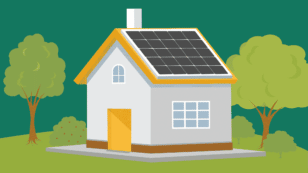
Top 4 Best Solar Companies in South Dakota (2024 Reviews)
In this guide to choosing a reliable and professional solar installer in South Dakota, you’ll learn:
- What are the top solar installation companies in South Dakota?
- How can you save money on your solar array when choosing an installer in South Dakota?
- What are the most important qualities to look for in a solar panel installation company in South Dakota?
Each product and or company featured here has been independently selected by the writer. You can learn more about our review methodology here. If you make a purchase using the links included, we may earn commission.
What Are South Dakota’s Top 4 Solar Energy Companies?
The Solar Energy Industries Association (SEIA) estimates that there are just five solar installation companies located in South Dakota, but there are other national and regional companies that service the state. Although there are fewer installers here than in most states, choosing one to handle your solar project can still be a time-consuming process. And choosing incorrectly can mean poor installation labor, property damage, poor service, and delays in getting to those coveted solar savings.
To save you time and energy, we’ve done the research for you and have found the top solar companies suited to providing professional solar installations in South Dakota:
- GenPro Energy Solutions: Outstanding Regional Installer
- Lakota Solar Enterprises: Solar Veteran
- Black Hills Solar: Outstanding Local Installer
- Midwest Solar: Outstanding Regional Installer
We’ll provide additional information on each of these companies in the drop-down menus below to help you decide which is right for you.

GenPro Energy Solutions

Regional Service
Average cost
Pros
- NABCEP-certified technicians
- Competitive pricing
- Multitude of products and services
Cons
- No leases or PPAs
- Limited warranty coverage
GenPro is our top pick for South Dakotans for two primary reasons: it has many years of experience, and it maintains well-below-average pricing.
GenPro has been in business since 2003, so it has nearly two decades of experience. In a state like South Dakota, which has had one of the slowest solar adoption rates in the country, this amount of experience is uncommon. It suggests that GenPro has the know-how needed to install your solar power system without any major issues or setbacks. Plus, it’s familiar with the laws and regulations regarding installing panels and connecting to the grid, so you’re likely to spend less time waiting for the installation and more time actually saving on your electric bills.
GenPro also has pricing that is well below the local average. This is crucial in areas like South Dakota, where the overall cost to convert to solar is about 20% higher than the national average. Below-average pricing means more customers will be able to afford its products and services.
To put that into perspective, the average cost to install solar panels in South Dakota is $32,655 before the federal credit or $22,859 after the credit is considered. When you go solar with GenPro, you’re more likely to spend between $17,000 and $18,000 for your system after the credit is applied. These numbers are based on averages pulled from consumer reviews, commercial sites, and the Tracking the Sun report from the Lawrence Berkeley National Laboratory.
GenPro maintains low pricing by offering more affordable solar panel brands, which means panel efficiency may be a bit lower. You could be looking at an average efficiency of between 20% and 21% based on the brands the company installs. This pales in comparison to the 22.7% Maxeon panels offer, but the savings should still be significant over time.
Still, we think the cost and the experience behind this installer make it a good option for South Dakota property owners.
Facts and Figures: GenPro Energy Solutions
| EcoWatch Rating |
|---|
| Better Business Bureau (BBB) Rating |
| Average Cost ($-$$$$$) |
| Solar Services |
| 4.5 |
| A+ |
| $ |
| Solar Panels, Solar Batteries, Generators, Energy-Efficiency Audits, Community Solar |

Lakota Solar Enterprises
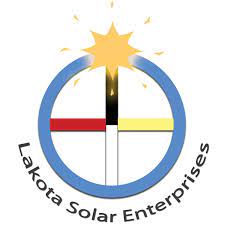
Local Service
Average cost
Pros
- Representatives are experts on local policies
- Focus on sustainable living
- Highly trained technicians
Cons
- Limited warranty coverage
- No leases or PPAs
- Limited brands of solar equipment available
In our opinion, Lakota Solar Enterprises is the premier choice for South Dakotans looking for below-average solar costs and extensive service offerings related to improving home efficiency.
Lakota Solar Enterprises offers photovoltaic (PV) panel and solar battery installations like most other providers. However, it also offers a wealth of energy-efficient and sustainable building services and solar heating. Solar heating is especially valuable in South Dakota, where the extremely low winter temperatures are the primary reason for above-average energy consumption and utility bills. According to the U.S. Department of Energy, heating alone accounts for around 29% of your utility bill, and that number could be even higher in South Dakota. Having access to these additional energy efficiency upgrades can be a big deal in terms of monthly expenditure.
This installer also manages to keep pricing below average for the area, which is great news for customers who see the typical $22,859 price tag on a photovoltaic (PV) system and turn the other way. You’re more likely to pay between $19,000 and $21,000 with Lakota Solar, so you could save a few thousand dollars.
Lakota Solar doesn’t offer the best warranty coverage, as you’ll only get the manufacturer’s warranty on the equipment and efficiency. This isn’t a deal-breaker for most prospective solar customers, but it is a downside to consider, especially in South Dakota, where the 30+ inches of snow each year can promote leaks if the equipment isn’t installed properly.
However, we still feel confident recommending this provider, as its technicians are highly skilled and have nearly two decades of experience. This should be sufficient to avoid most issues that could come up due to poor installation techniques.
Facts and Figures: Lakota Solar Enterprises
| EcoWatch Rating |
|---|
| Better Business Bureau (BBB) Rating |
| Average Cost ($-$$$$$) |
| Solar Services |
| 4 |
| Not Rated |
| $$ |
| Solar Panels, Solar Batteries, Solar Heating, Sustainable Building |

Black Hills Solar
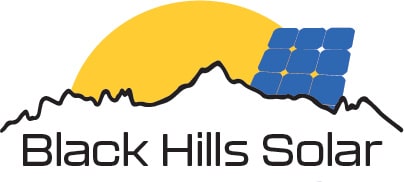
Local Service
Average cost
Pros
- Outstanding customer service
- Multitude of products and services
- NABCEP-certified technicians
- Relatively young company
Cons
- No leases or PPAs
- Limited service area
Black Hills Solar makes our list of the top solar providers in SD as it’s one of the only local providers that offer warranty coverage in line with the industry average. It also provides outstanding customer service.
This installer offers a 25-year solar panel efficiency warranty, the manufacturer’s warranty (usually 25 years) for the equipment and a 10-year workmanship warranty. The labor warranty, in particular, is great for ensuring your panels are installed properly and won’t leak. Roof leaks are an elevated risk in SD due to the above-average snowfall.2
You’re also insulated from installation errors, as the technicians are certified by the North American Board of Certified Energy Practitioners (NABCEP). This certification is a big deal in any state, but especially in South Dakota, where many installers are just coming into the industry and have minimal experience.
Black Hills Solar is a smaller company that offers outstanding customer service and communication. This is harder to come by in South Dakota than in most other states, as the majority of companies that serve the area are larger national companies and regional installers.
Black Hills only serves a small portion of South Dakota, but we believe the value it provides is excellent for those that fall within its service area.
Lastly, Black Hills Solar is a bit more expensive than our first two picks. Its prices are around average based on consumer reports and reviews, which means you can expect to pay around $32,655 with this company before the federal credit or closer to $23,000 after the credit.
Facts and Figures: Black Hills Solar
| EcoWatch Rating |
|---|
| Better Business Bureau (BBB) Rating |
| Average Cost ($-$$$$$) |
| Solar Services |
| 4 |
| Not Rated |
| $$$ |
| Solar Panels, Solar Batteries, EV Chargers, Maintenance & Repairs |

Midwest Solar
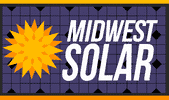
Regional Service
Average cost
Pros
- Custom system designs
- Outstanding customer service
- Great warranty coverage
Cons
- No leases or PPAs
- Relatively young company
Midwest Solar is a small local company that excels in offering above-average customer service. It also provides a customizable solar setup to help you find the perfect solar solution to meet your needs. This is less common in an area like South Dakota, where most of the installers are regional or national and don’t provide the same kind of hands-on and individualized experience as smaller local companies.
To that end, Midwest Solar is one of the few companies that can provide access to any PV panel brand. This allows you to choose a brand that has the efficiency rating to meet your above-average energy needs in SD and still stay within your budget.3
Of course, this is important in your area, as solar panel costs are well above average throughout the state. While the per-watt price of $3.11 is lower than the national average, most households in SD consume around 1,037 kilowatt-hours (kWh) of electricity per month, which is much higher than the U.S. average of 881 kWh. Higher electricity usage mandates larger and more expensive systems, but you could get away with a smaller system if you opt for one of the high-efficiency brands Midwest Solar carries.
Midwest Solar’s locally experienced techs are able and willing to help you take advantage of local solar rebates and incentives and help you secure solar financing to make solar conversion more accessible.
This company is relatively young and doesn’t have much of a proven company history. It also doesn’t offer a workmanship warranty. Still, we think the outstanding customer service and hands-on approach to solar make this a worthwhile installer to consider.
Facts and Figures: Midwest Solar
| EcoWatch Rating |
|---|
| Better Business Bureau (BBB) Rating |
| Average Cost ($-$$$$$) |
| Solar Services |
| 4 |
| Not Rated |
| $$$$ |
| Solar Panels, Solar Batteries, EV Chargers, Energy-Efficiency Audits, Maintenance & Repairs |
Watch Below: Is Going Solar Worth It?
How Can You Save Money When Hiring A Solar Company In South Dakota
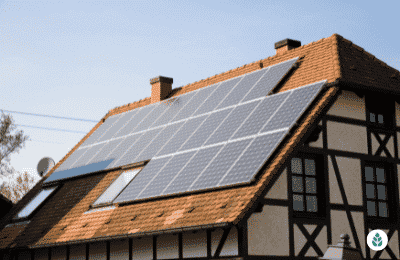
Given the high cost of solar conversion, most South Dakota property owners will look for ways to reduce their up-front costs and maximize their long-term energy savings. There are some things we recommend doing to bring your conversion costs down, including:
- Taking advantage of the solar perks available to you
- Considering installing a solar battery
- Choosing a high-efficiency panel brand
- Getting multiple solar quotes
We’ll explain how these tips can save you money on your PV equipment in the sections below.
Take All the Solar Incentives You Can
Solar incentives are some of the best options for reducing your initial conversion costs and boosting your long-term savings. Unfortunately, South Dakota has far fewer benefit programs than most states, but the perks that are available can help save you thousands on your system.
We’ll provide a brief explanation of South Dakota’s incentives in the table below, but you can read more about these perks and how to take full advantage of them in our guide to solar benefit programs in South Dakota.
| Solar Benefit Program | Program Description |
| Federal Solar Investment Tax Credit (ITC) | The federal solar tax credit gets applied to your income tax liability and can effectively bring down the cost of your system by thousands of dollars. The credit is offered by the federal government for 30% of your entire installation cost, which averages around $9,797 in SD. |
| Renewable Energy Systems Property Tax Deduction | This is a property tax exemption that prevents your taxes from going up after you install solar. Without this perk, your panels would bump up your tax-assessed value, and you’d end up paying more in property taxes. |
Consider Installing a Solar Storage Solution
Next, we strongly recommend considering installing a solar battery — like a Tesla Powerwall — alongside your panels. Doing so will increase your initial solar panel system costs by between $10,000 and $20,000, on average, but it’s very often a worthwhile investment in South Dakota.
The reason is that The Mount Rushmore State doesn’t mandate net metering through interconnection. Net metering credits you for the excess energy your panels produce and send to the electric grid. The credits normally offset the energy you take from the grid — for instance at night or when your panels are covered in snow and production plummets.
Installing a battery lets you overproduce energy and store the excess for later use. You can maximize your energy savings in this way, even when your panels aren’t generating electricity. When you do pull that stored energy, you don’t pay the retail rate per kWh you would if you pulled it from the grid instead. The average rate for electricity in South Dakota is 13.23 cents per kWh, and with a monthly consumption of over 1,000 kWh, the savings can really add up.
Even if South Dakota does eventually mandate net metering, it will likely be net metering 3.0, which was recently rolled out in California. The credit rate in this program is set well below the retail rate, which means batteries are more or less required to see significant savings anyway. Even if the policy changes in the future in South Dakota, we feel investing in batteries now is a good idea.
Plus, installing them alongside your panels means you could apply the ITC to them and effectively reduce your battery cost by 30%. Retrofitting them wouldn’t provide the same opportunity and would end up costing you more.
Choose a Panel Brand With a High Efficiency Rating
We also suggest choosing a company that installs high-efficiency panel brands like Maxeon from SunPower or REC. The higher the efficiency rating, the more power your panels will generate given the limited space on your roof. Higher production rates are ideal in South Dakota, as the energy needs in the area are well above the average in the U.S.
Efficient panels are more likely to save you money on your electricity bills, making them more worthwhile in the long run.
Get Multiple Quotes
Finally, we suggest that you get quotes from a few installers for your solar project. Although SD isn’t home to many installers, each will likely quote a different amount for installation services on your home. Getting a few free quotes from installers in your area lets you compare and find the best value for your money.
See Also: Calculate How Much You Can Save By Going Solar
Will Solar Increase Your Home Value In South Dakota?
Yes! One of the major benefits of converting to solar in SD that many property owners forget is that solar panels make your home more valuable.
Specifically, installing panels on your property should boost the value by around 4.1%, according to estimates from Zillow.4 With the average home value in South Dakota sitting at around $293,181, that’s an increase of approximately $12,000.5
With solar adoption being so slow in South Dakota, your actual value bump could be a bit less. However, you may also see even more value in areas that have taken steps to popularize solar and educate consumers about its benefits.
For example, there was recently a massive community solar farm installed in Oglala Lakota County, and a wind farm initiated at the beginning of 2024 in Pennington County. These projects suggest that solar and renewable energy in general are more widely accepted now than ever before, so you could see a more significant value bump in the state in the future.
Should South Dakota Residents Hire a Professional Solar Installer Or DIY?
DIY PV panel installation is often an attractive option, especially in areas like South Dakota where professional installation is more expensive than average. Hiring an expert to convert your home in SD will cost around $23,000, while a DIY solar solution would average between $10,000 and $15,000.
Looking at cost alone, DIY solar seems like the way to go. However, there are a few reasons why we recommend against installing your panels yourself. These include:
- Lower panel efficiencies that come with DIY solar kits
- Less attractive solar battery options
- Less appealing warranty coverage
- Greater risk of property damage stemming from issues with inexperienced installers
We’ll discuss why we think these reasons are so compelling and why we recommend against DIY installation in the sections below.
DIY Panels Have Lower Efficiency Ratings
First and foremost, DIY panel brands have efficiency ratings below 18% in most cases, with an average closer to 15%. Not only are they less efficient than professional brands — which average above 20% and push close to 23% — but the efficiency also degrades much more quickly.
As mentioned above, panel efficiency is a crucial thing to consider in South Dakota, as the energy consumption among residents is well above average. High-efficiency professional panels cost more than DIY options, but they will often pay for themselves in energy savings over time.
DIY Solar Batteries Have Much Lower Capacities
We also mentioned above that solar batteries are particularly useful in South Dakota because they ensure no energy your panels generate is lost to the grid, since net metering isn’t mandated in the state. Solar batteries with a high capacity are more likely to have a shorter solar payback period and save you money on utility bills in the long run.
DIY solar batteries — usually 12-volt batteries — hold minimal charges and may not be able to store enough energy to maximize your savings on your energy bills.
In comparison, professionally installed batteries like the Tesla Powerwall can store several kilowatt-hours (kWh) of energy to provide power through the night, cloudy days, snow coverage and blackouts. Therefore, they’re far more likely to provide more energy savings.
Even for those customers in South Dakota that do have access to net metering, the policy is likely to change in the near future to NEM 3.0, which would once again make larger batteries far more valuable and borderline necessary for significant savings.
DIY Panels Don’t Have Particularly Good Warranty Coverage
Third, DIY panels come with less appealing warranty coverage in some cases. The typical DIY kit includes a 15-year product warranty and a 10-year production warranty. Warranties from professional installers average 25 years for the equipment, 25 years for the production and 10 years for workmanship.
It’s true that some installers in South Dakota don’t offer much in the way of a workmanship warranty, but even the product warranty from the manufacturer alone is significantly longer than what you’d get with a DIY system.
DIY Installation Puts You at Greater Risk of Property Damage
Finally, penetrating your roof and installing PV panels is inherently risky — but especially so if you don’t have experience. DIYers that are new to solar setups are far more likely to make mistakes. Unfortunately, those errors could lead to roof leaks and resulting property damage that could negate the initial savings on your DIY system. This is especially true in South Dakota, where snowfall is nearly double the national average and well beyond double in certain areas.
What Should South Dakota Residents Look For in a Solar Installer?
There are a few things we recommend prioritizing when choosing a PV panel installation company in South Dakota. These include:
- Panel brand selection
- Price and payment options
- Experience
We’ll explain why we believe these factors are so important in the sections below.
Panel Brand Selection
First and foremost, we recommend choosing an installer that carries tier-one panel brands with above-average efficiency ratings. Having efficient panels on your home will help ensure that your PV system produces sufficient energy to meet the above-average energy demands in your area.
Ultimately, an efficient panel can help effectively bring down your overall electricity rates, which improves the value of your system and allows you to pay it off more quickly.
Price and Payment Options
Next, since solar PV systems in South Dakota are significantly more expensive than they are in most other states, we suggest prioritizing your installer choices based on price and payment options.
Companies with average or below-average pricing will help maximize the value and return on investment you see from your equipment. Choosing an installer with a payment option that works for you also means your system will be accessible and will fit within your budget.
Local Experience
Finally, we suggest choosing an installer with years of experience in the solar industry, if at all possible. Since solar adoption is really just starting to pick up in SD, new companies have been popping up over the last few years to meet demand.
Young companies aren’t inherently bad, but they are more likely to leave the industry and void your warranties in the process. Choosing an experienced installer also means you’re more likely to get a professional installation that is done properly the first time around.
The cost information presented in this article is derived from a comprehensive analysis, incorporating data from multiple industry sources. The average cost per watt per state was calculated based on figures from Consumer Affairs, Energy Sage, and Berkeley Lab’s Electricity Markets & Policy Department. Additionally, monthly energy consumption and the average monthly cost of electricity were sourced from the U.S. Energy Information Administration, ensuring a well-rounded and accurate representation of the information presented.
Methodology: How We Ranked South Dakota’s Solar Companies
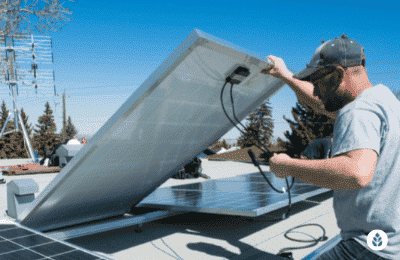
- Solar Equipment & Services (20%)
- Price & Payment Options (20%)
- Experience (15%)
- Availability (15%)
- Qualifications, Reputation & Certifications (10%)
- Solar Warranty & Customer Support (10%)
- Environmental, Social and Corporate Governance Factors (10%)
We also never let our commercial partnerships affect our methodology, so each company is rated solely based on how likely they are to provide a system suited to your home. We’ll explain why we believe these factors are most crucial in SD below.
Solar Equipment & Services
First, we look at the services and equipment brands offered by each provider. As we explained previously, high-efficiency panels like those from SunPower are crucial in South Dakota, as they are most likely to offset the high energy consumption in the state. We prioritize installers who carry top-tier, efficient panels.
We also rank companies higher if they offer a good selection of solar batteries. Since South Dakota doesn’t offer net metering to solar customers, having a battery to store the energy you can call on at any time is a great way to reduce energy costs and save money over time with your PV system.
Price & Payment Options
Next, we look at the relative pricing of each provider as well as the payment options afforded to customers.
Companies that have average or below-average pricing can score higher, but we also prioritize installers who keep clean energy accessible by accepting multiple, flexible payment options. We don’t recommend leases or power purchase agreements (PPAs) at the present, so we don’t currently dock companies that don’t offer these options. However, we do try to promote companies that accept these in addition to cash purchases and loans, as these low-cost options are likely to be more prevalent and desirable when net metering policies change and mandate batteries, which drive up installation costs.
Experience in South Dakota
Next, we prioritize experience. South Dakota’s local solar industry is just now starting to bloom, so new companies are more prevalent than ever before. We give precedence to installers with at least five years of experience. Those that have ten or more years get a perfect score in this category.
Availability
Since solar isn’t terribly popular throughout SD, some installers focus their efforts on larger cities where the demand is naturally higher. Since companies with wider service areas appeal to more consumers, we rank companies higher if they serve the entire state.
Qualifications, Reputation & Certifications
Other things we look for to avoid recommending companies that provide below-average service include qualifications, certifications and signs of a positive reputation that set installers apart from others. We rank companies higher if they hold:
- Accreditation from the BBB
- Few customer complaints on BBB and other solar review sites
- NABCEP certification
- Certification from the Leaders in Energy and Environmental Design (LEED)
- At least 100 4-star-or-better reviews on Google
Solar Warranty & Customer Support
Warranties for solar energy systems help protect your equipment and the structure on which they’re installed. Longer and more robust warranty coverage is always better, so we use the industry averages below to compare installers in South Dakota:
- 25-year warranty for equipment
- 20- to 25-year warranty for energy efficiency
- 10-year warranty for workmanship
Unfortunately, many of the installers in the area don’t provide particularly good warranty coverage options, and most just include the manufacturer’s warranty. Still, this is all the more reason for us to highlight those that provide superior coverage.
Environmental, Social & Corporate Governance Factors
Finally, we like to promote companies that have a positive impact on the environment and the areas they serve. Some things that suggest this include:
- A solution for PV panel recycling
- Affordable options for low-income solar customers
- Sustainable business practices
FAQ: Best Solar Companies in South Dakota
While solar isn’t terribly popular yet in South Dakota, we still get questions pretty frequently from customers looking to choose one of the top installers in the area. We’ll answer some of the most common questions we see below.
Based on our company assessments, GenPro Energy is the most reputable solar panel installer in South Dakota. This is a regional company with a service area throughout all of South Dakota. It maintains outstanding customer service and affordable pricing, and it provides a good array of products and services to help you offset your electric bills.
Yes, absolutely. Many homeowners in South Dakota choose a solar provider based on the panels it installs. Some residents opt for panels that have robust damage coverage from the manufacturer for peace of mind in South Dakota’s extreme weather. Others opt for installers who carry only high-efficiency panels because they want to maximize their savings on energy bills. The type of panel you have installed will affect your entire experience after installation, so choosing the right brand for your needs is crucial.
GRID Alternatives, having installed the most kilowatt-hours in the state, is widely regarded as the biggest solar provider in South Dakota according to most estimates. GenPro Energy sits closely behind GRID Alternatives in terms of the number of installations in South Dakota.
According to data available from the Solar Energy Industries Association (SEIA), there are 15 solar-related companies based in South Dakota. Of these, only five provide PV panel installation services for homeowners.
South Dakotans are well prepared to deal with long, frigid winters, but many wonder if their PV panel systems will still work with the less intense sunlight and snowfall. Photovoltaic panels will still work in the winter, but energy production will likely be lower given that the sunlight isn’t as strong or plentiful. High-efficiency panels can produce enough energy in the winter to maximize savings, so more costly panels typically suit homeowners in South Dakota better. Also, electricity actually flows faster in colder temperatures, so you may see your solar panels produce more efficiently in the winter anyway.
Related articles
Top Solar Installers in South Dakota Cities
Comparing authorized solar partners
-
- NABCEP-certified technicians
- Competitive pricing
- Multitude of products and services
- No leases or PPAs
- Limited warranty coverage
A+Outstanding Regional Installer
Having trouble deciding? Click below and use our process to receive multiple quotes instead:

 233k
233k  41k
41k  Subscribe
Subscribe 


